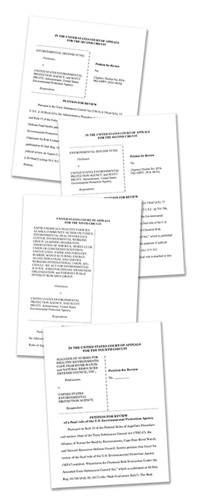Advertisement
Grab your lab coat. Let's get started
Welcome!
Welcome!
Create an account below to get 6 C&EN articles per month, receive newsletters and more - all free.
It seems this is your first time logging in online. Please enter the following information to continue.
As an ACS member you automatically get access to this site. All we need is few more details to create your reading experience.
Not you? Sign in with a different account.
Not you? Sign in with a different account.
ERROR 1
ERROR 1
ERROR 2
ERROR 2
ERROR 2
ERROR 2
ERROR 2
Password and Confirm password must match.
If you have an ACS member number, please enter it here so we can link this account to your membership. (optional)
ERROR 2
ACS values your privacy. By submitting your information, you are gaining access to C&EN and subscribing to our weekly newsletter. We use the information you provide to make your reading experience better, and we will never sell your data to third party members.
Policy
More Chemical Data, More Often
Regulation: Manufacturers must supply EPA faster with more information about their products
by Cheryl Hogue
August 15, 2011
Chemical manufacturers will have to supply more data to the Environmental Protection Agency more frequently about the quantity of substances they make and the uses of those products, under a rule unveiled on Aug. 2.
Chemical makers have periodically supplied production information to EPA for decades under the federal Toxic Substances Control Act. The new rule expands the amount of information they must supply to the agency. It also reverses a move by the George W. Bush Administration that required such reports every five years. The rule reverts to the every-four-years timeframe for this reporting that had been used since the 1980s.
Under the rule, chemical makers are required to file the newest round of these reports in 2012, providing information about production in 2011. Companies have to supply data about processing and use of any chemicals they make in quantities of 100,000 lb per year or more. But starting in 2016, this threshold will be lowered to 25,000, lb/year.
“Collecting this critical information on widely used chemicals will enable EPA to more effectively identify and address potential chemical risks,” says Steven Owens, the agency’s assistant administrator for chemical safety and pollution prevention.
The rule also limits the secrecy claims that companies can make about the information they submit. It requires upfront substantiation for some of those assertions. EPA protects data claimed as confidential business information from disclosure.
In EPA’s last round of chemical data collection, some companies claimed as confidential their responses that certain information the agency sought was “not known or reasonably ascertainable.” Under the rule, the agency will no longer allow trade secret claims for this kind of response.
Two industry groups, the Society of Chemical Manufacturers & Affiliates and the American Chemistry Council, praise EPA for responding to industry concerns for a pragmatic and practical regulation.
Michael P. Walls, ACC vice president for regulatory and technical affairs, says accurate data on use of and exposure to commercial chemicals are “particularly important for the agency to meet its regulatory goals and to enhance public confidence that the chemical industry is being transparent about its products.”
In contrast, the National Petrochemical and Refiners Association says the rule will dramatically increase the reporting burden on manufacturers and requires more information than EPA can feasibly use.
The Environmental Working Group, an activist group, says the every-four-years reporting isn’t frequent enough and leaves EPA and the public without adequate information. “The fact that EPA does not annually track what chemicals are produced or imported in the United States is a serious failure of modern chemical policy,” says David Andrews, an EWG senior scientist.



Join the conversation
Contact the reporter
Submit a Letter to the Editor for publication
Engage with us on Twitter